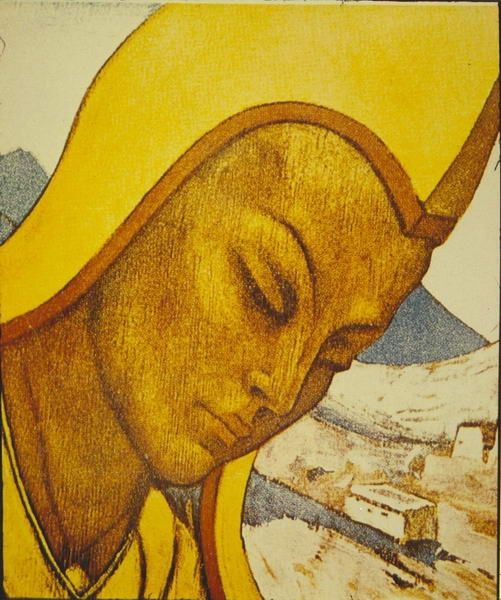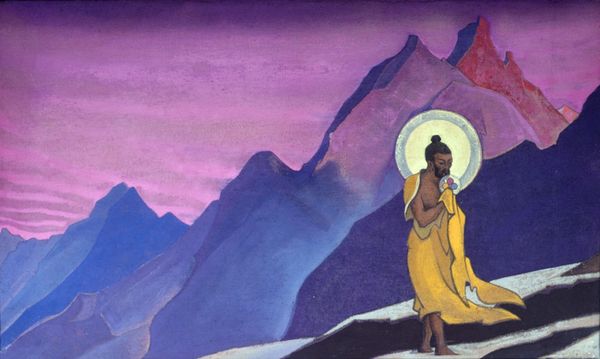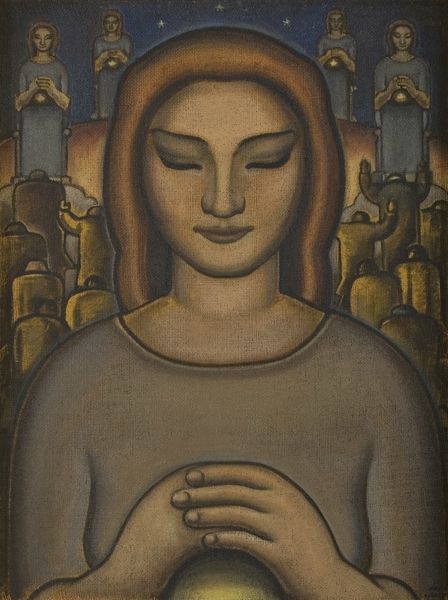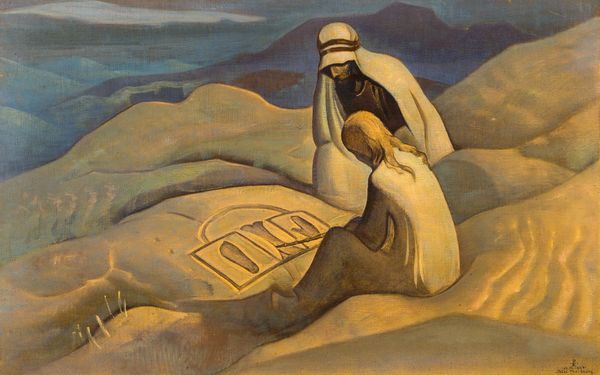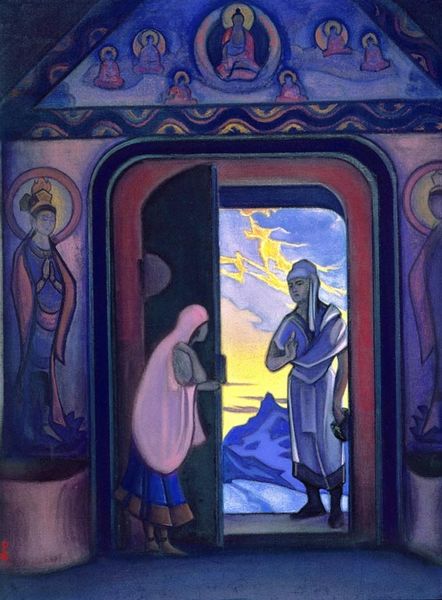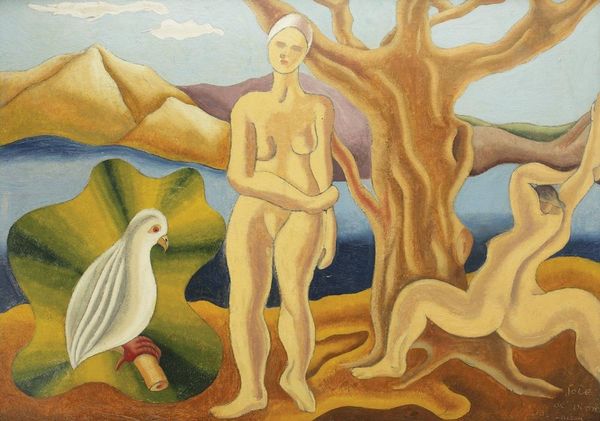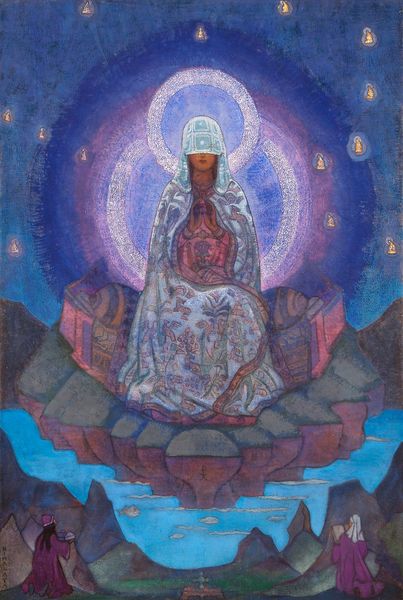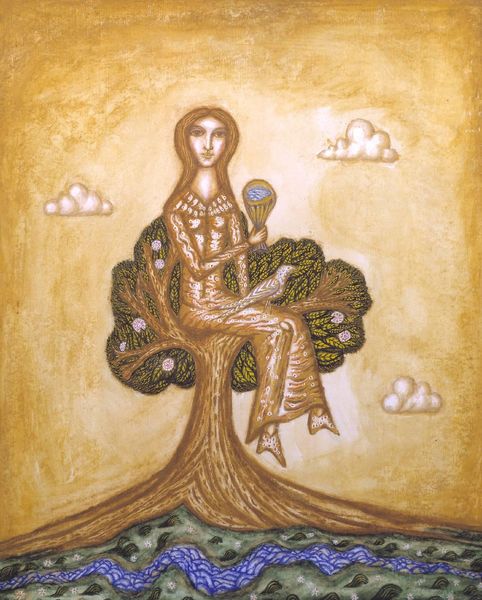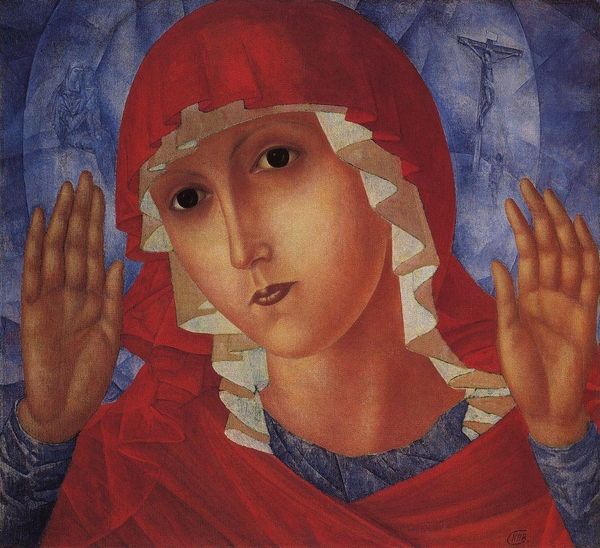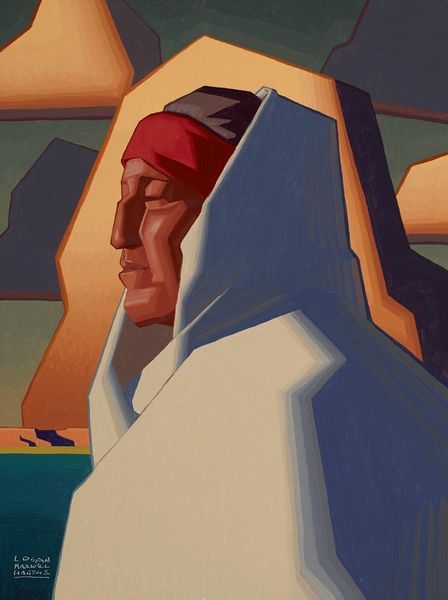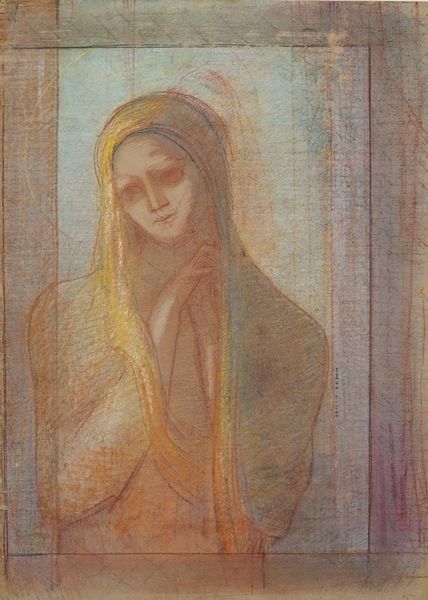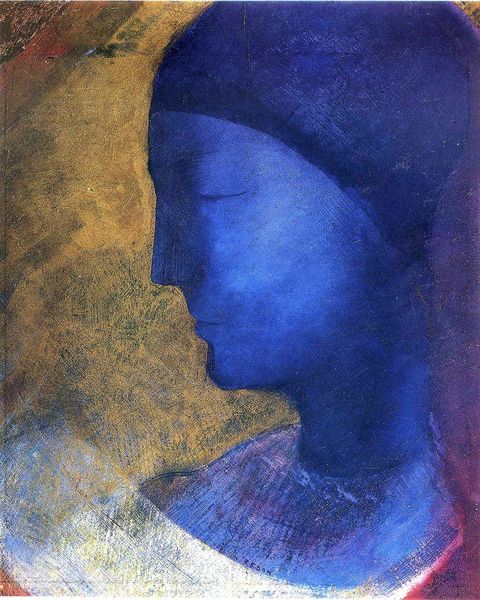
Copyright: Public domain
Curator: Before us we have Nicholas Roerich’s “Lama”, painted in 1945, executed in tempera. The figure is depicted in solemn contemplation, set against a backdrop of stylized mountains. Editor: It's incredibly serene, almost otherworldly. The colors—the blues, pinks, and earthy yellows—evoke a sense of both stillness and spiritual vibrancy. How does Roerich's choice of materials influence this? Curator: Well, tempera lends itself to these flat planes of luminous color. Look at how the pigment sits on the surface—almost jewel-like. Roerich’s work throughout his career reflected a spiritual quest for meaning, and for him, art-making was deeply tied to craftsmanship and a commitment to his unique vision. This piece embodies a merging of Eastern mysticism with modernist sensibilities. Editor: It's the blending that interests me. He clearly draws from established traditions in painting, especially landscape, but his interpretation feels quite... mediated. What sort of labour went into realizing Roerich’s vision here? The layers look quite painstakingly created… Curator: It’s fascinating, isn't it? Consider how tempera demands careful preparation and layering. This echoes a traditional icon-painting technique, each layer like a prayer. But, stepping back, what do we make of the landscape and figure seemingly intertwined? Editor: A stylized backdrop that hints at ancient wisdom... I almost feel as though the mountain is the lama—or, at least, they both share a unified essence, perhaps the slow and methodical accumulation of material reality. The very building of the settlement is mirrored in Roerich’s choice to build the image with layered pigments… The labor, then, isn't merely that of a painter but perhaps a spiritual craftsman, layering beliefs to make meaning. Curator: Yes! The simplification of form isn’t emptiness, but an opening. His painting resonates like a meditative experience; you're invited to enter a space of calm, reverence... Editor: So, in the end, it’s not just a depiction, it’s also the realization of an idea: Roerich sought something deeply essential through a meticulous working with physical substance and craft. Thank you! Curator: Thanks to you; you made me think about painting as a true meditative act.
Comments
No comments
Be the first to comment and join the conversation on the ultimate creative platform.
